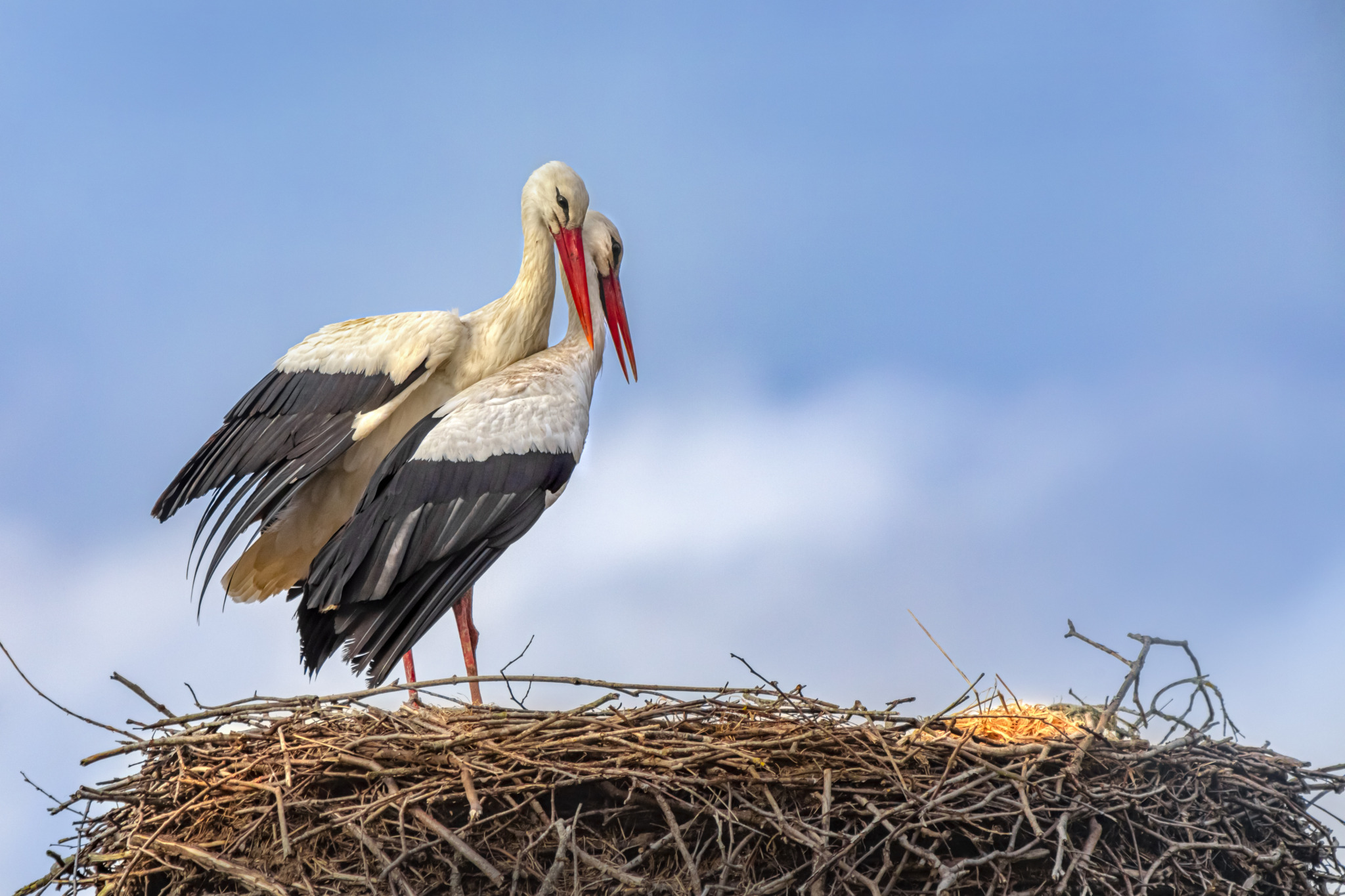The white stork (Ciconia ciconia) is a large bird in the stork family, Ciconiidae. Its plumage is mainly white, with black on the bird’s wings. Adults have long red legs and long pointed red beaks, and measure on average 100–115 cm (39–45 in) from beak tip to end of tail, with a 155–215 cm (61–85 in) wingspan. The two subspecies, which differ slightly in size, breed in Europe (north to Finland), northwestern Africa, southwestern Asia (east to southern Kazakhstan) and southern Africa. The white stork is a long-distance migrant, wintering in Africa from tropical Sub-Saharan Africa to as far south as South Africa, or on the Indian subcontinent. When migrating between Europe and Africa, it avoids crossing the Mediterranean Sea and detours via the Levant in the east or the Strait of Gibraltar in the west, because the air thermals on which it depends for soaring do not form over water.
[Wikipedia]
The White Stork (Ciconia ciconia) is a large, striking bird known for its distinctive black and white plumage and long, slender legs. Belonging to the family Ciconiidae, this species is native to Europe, parts of Africa, and western Asia. It is a migratory bird, with populations in Europe typically wintering in Africa, particularly in regions south of the Sahara Desert.
Here are some key characteristics and features of the White Stork:
- Appearance: White Storks are predominantly white with black flight feathers and a black tail. Their long legs are also black, contrasting with their white body. Adults have a bright red bill and red legs, while juveniles have duller bills and legs.
- Habitat: White Storks inhabit a variety of open habitats, including grasslands, wetlands, marshes, and agricultural areas. They often nest on human-made structures such as chimneys, rooftops, or specially constructed platforms, although they historically nested in trees.
- Behavior: White Storks are known for their distinctive nesting behavior, often building large stick nests on tall structures, sometimes in colonies. They are highly sociable birds and may gather in large flocks during migration. They are primarily carnivorous, feeding on a variety of prey including insects, small mammals, fish, amphibians, and reptiles.
- Migration: White Storks are famous for their long-distance migrations. Populations breeding in Europe migrate south to Africa for the winter, crossing vast distances and often navigating thermal currents to conserve energy during flight. Their return to Europe in the spring is often seen as a harbinger of the changing seasons.
- Cultural significance: White Storks have been revered and celebrated in various cultures throughout history. In some regions, they are considered symbols of fertility, good luck, or even as bringers of babies. They have also been the subjects of folklore and legends in many countries where they breed or migrate.
Despite their cultural significance and widespread distribution, White Storks face threats such as habitat loss, collisions with power lines, and changes in agricultural practices that affect food availability. Conservation efforts aimed at protecting nesting sites, maintaining suitable habitat, and mitigating human-induced threats are crucial for the continued survival of this iconic bird species.
Views: 40
Subscribe to the newsletter:
